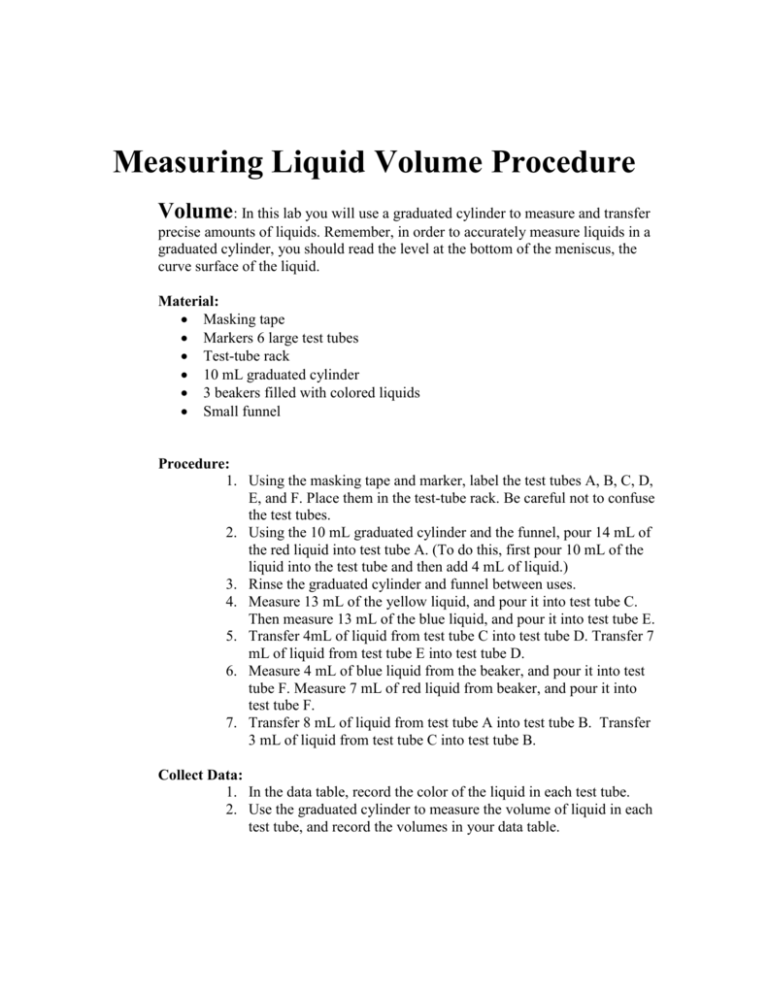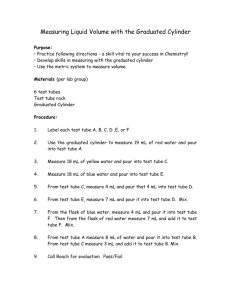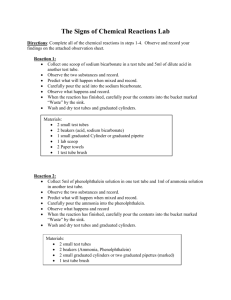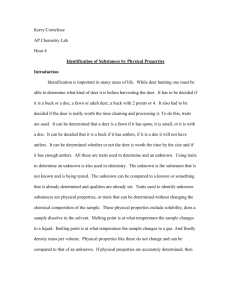Measuring Liquid Volume Procedure
advertisement

Measuring Liquid Volume Procedure Volume: In this lab you will use a graduated cylinder to measure and transfer precise amounts of liquids. Remember, in order to accurately measure liquids in a graduated cylinder, you should read the level at the bottom of the meniscus, the curve surface of the liquid. Material: Masking tape Markers 6 large test tubes Test-tube rack 10 mL graduated cylinder 3 beakers filled with colored liquids Small funnel Procedure: 1. Using the masking tape and marker, label the test tubes A, B, C, D, E, and F. Place them in the test-tube rack. Be careful not to confuse the test tubes. 2. Using the 10 mL graduated cylinder and the funnel, pour 14 mL of the red liquid into test tube A. (To do this, first pour 10 mL of the liquid into the test tube and then add 4 mL of liquid.) 3. Rinse the graduated cylinder and funnel between uses. 4. Measure 13 mL of the yellow liquid, and pour it into test tube C. Then measure 13 mL of the blue liquid, and pour it into test tube E. 5. Transfer 4mL of liquid from test tube C into test tube D. Transfer 7 mL of liquid from test tube E into test tube D. 6. Measure 4 mL of blue liquid from the beaker, and pour it into test tube F. Measure 7 mL of red liquid from beaker, and pour it into test tube F. 7. Transfer 8 mL of liquid from test tube A into test tube B. Transfer 3 mL of liquid from test tube C into test tube B. Collect Data: 1. In the data table, record the color of the liquid in each test tube. 2. Use the graduated cylinder to measure the volume of liquid in each test tube, and record the volumes in your data table. Did all of the groups report the same colors? Explain why the colors were the same or different. Why should you not fill the graduated cylinder to the very top?









